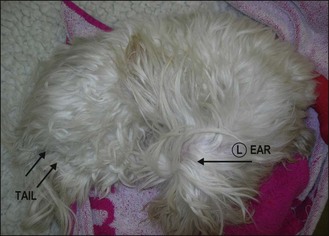55 Torticollis
CLINICAL EXAMINATION
The dog was obtunded and in lateral recumbency with an almost 90° turn of his head and neck to the right. The left eye was visible and had a menace response, a normal direct PLR in a medium sized pupil. The left fundus was normal. There was no strabismus or spontaneous nystagmus in the left eye. The right eye was hidden by the abnormal posture (Fig. 55.1).
Stay updated, free articles. Join our Telegram channel

Full access? Get Clinical Tree



